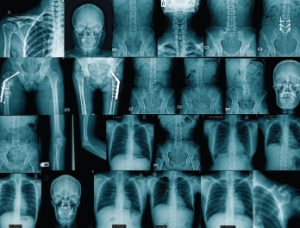
Tridsanu Thopet / SHUTTERSTOCK.COM
SAN DIEGO—At the 2017 ACR/ARHP Annual Meeting Nov. 3–8, experts discussed improving bone health in the U.S., gave tips on bone health disorders in pediatrics and reviewed new translational science findings for joint conservation in early osteonecrosis.
E. Michael Lewiecki, MD, director of the New Mexico Clinical Research & Osteoporosis Center in Albuquerque, N.M., called on physicians to help improve osteoporosis care, which has declined over the past several years due factors that include fear of drug side effects, dual X-ray absorptiometry (DXA) reimbursement declines and competing guidelines.
After more than 10 years of dropping hip fracture rates, the rate has plateaued over the past several years, leading to a sizable gap between the actual and projected numbers of 14,000 additional hip fractures and 2,800 additional deaths that could be attributed to fractures, all of which might have been prevented, Dr. Lewiecki said.
“This is why it’s now called a crisis,” he said. “My big audacious goal is to reduce the osteoporosis treatment gap from 80% to 20% in the next 10 years. I’d like to deputize each of you in this audience. I’d like to empower you to do something about this. And you can. There are things that we can all do to help.”
Specifically, Dr. Lewiecki said physicians can:
- Develop a fracture liaison service (FLS) system that identifies those at risk of secondary fracture and delivers the treatment they need. This typically involves an FLS coordinator (often a nurse practitioner or physician’s assistant) who uses software to track patients;
- Improve DXA reimbursement and employ DXA best practices. “Poor DXA reimbursement leads to poor DXA quality,” he said, urging physicians to work to promote better reimbursement. He also called on physicians to bone up on best practices, with up-to-date DXA training, certification and possibly facility accreditation;
- Treat to target. An American Society for Bone and Mineral Research-National Osteoporosis Foundation task force suggests treating to a target T score of -2.0, rather than -2.5, could increase confidence “considering the measurement error with the DXA test”; and
- Knowledge-share through Project ECHO, which involves case-based discussions and brief didactic presentations via videoconference. The project now sports 139 hubs in 23 countries, covering more than 45 diseases, Dr. Lewiecki said.
Catherine Gordon, MD, MS, director of adolescent and transition medicine at Cincinnati Children’s Hospital in Cincinnati, discussed how to treat and manage pediatric patients with bone disorders, from primary osteogenesis imperfecta to secondary bone disorders, including juvenile idiopathic arthritis (JIA), glucocorticoid-induced osteoporosis and anorexia nervosa (AN).

